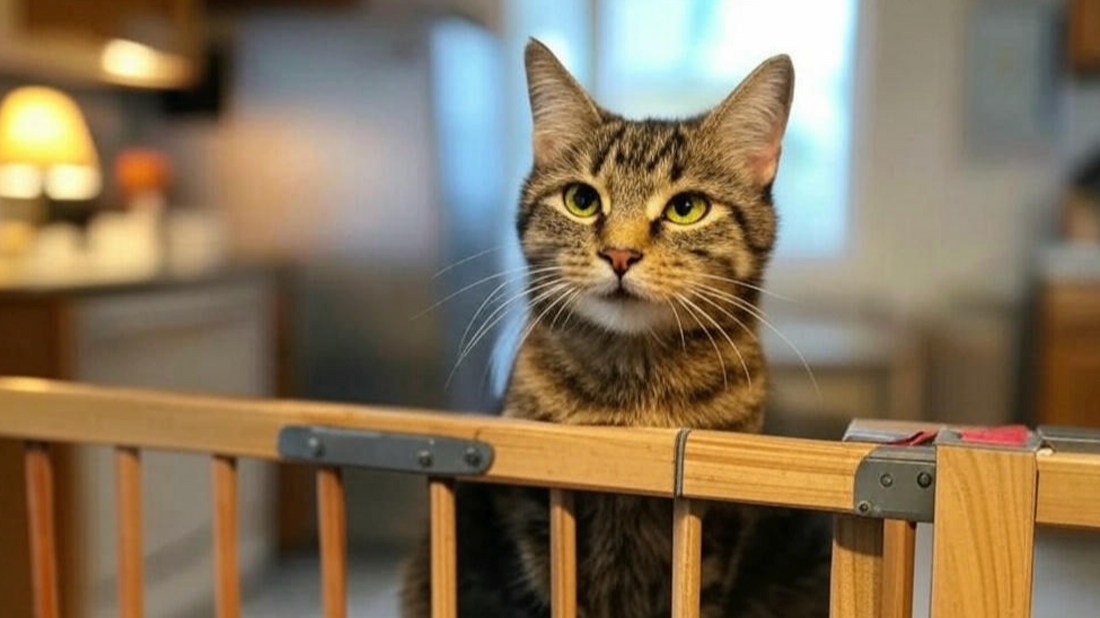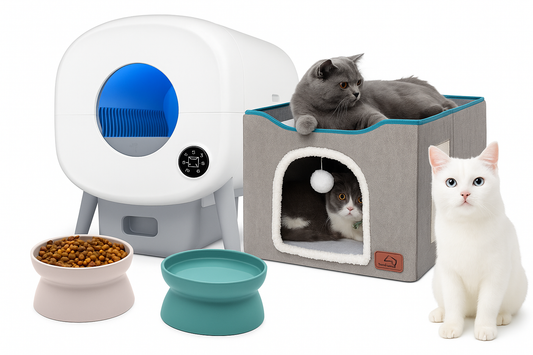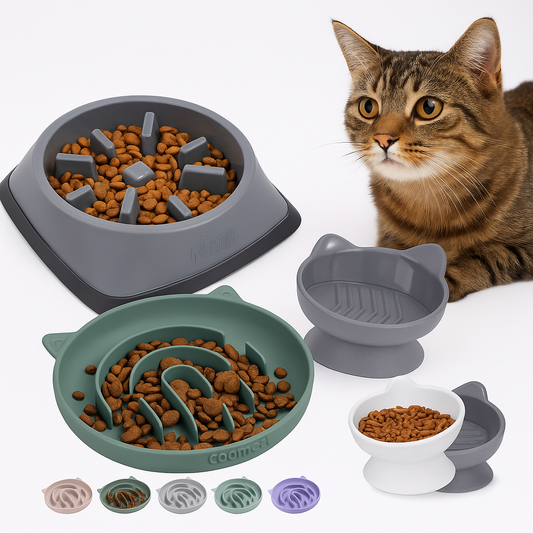
How to Keep Your Cat Off the Kitchen Counter - For Good!
Cats are curious creatures, and for many feline owners, keeping their cat off the kitchen counter feels like an impossible battle. Whether they’re drawn to the smell of food, seeking a better vantage point, or simply testing boundaries, cats love countertops. But don’t worry—there are effective, humane ways to keep them off for good.
In this guide, we’ll break down why cats love counters, the risks involved, and the best training techniques to stop this habit once and for all. Plus, we’ll cover some expert-backed cat training tips and the best cat deterrents for countertops that actually work.
Why Do Cats Love Jumping on Kitchen Counters?
Before trying to fix the problem, it helps to understand why cats love counters in the first place. Here are the top reasons:
| Reason | Why It Happens |
|---|---|
| Hunting Instinct | Counters are prime spots for scoping out food and prey (even if it’s just crumbs). |
| Height Preference | Cats love elevated surfaces where they can observe their surroundings. |
| Cool Surfaces | In warm weather, countertops provide a cool place to rest. |
| Attention-Seeking | If your cat jumps on the counter and you react, they might repeat the behavior just for interaction. |
| Boredom & Curiosity | Cats explore new heights when they lack stimulation. |

Why You Should Keep Your Cat Off the Counter
Aside from the inconvenience, there are real risks associated with allowing your cat to roam freely on kitchen surfaces:
- Food Contamination: Bacteria from litter boxes or outside adventures can transfer to counters.
- Hot Surfaces: Cats can burn their paws on stovetops or hot appliances.
- Sharp Objects: Knives, glass, and other sharp items pose a safety hazard.
- Toxic Foods: Some common kitchen items like onions, garlic, and chocolate can be deadly to cats.
- Encourages Bad Habits: If a cat gets away with counter surfing, they may start jumping onto dining tables and food prep areas, increasing potential issues.

How to Keep Your Cat Off the Kitchen Counter—For Good!
1. Provide Alternative High Places
One of the easiest ways to deter counter-jumping is to offer a better alternative. If your cat wants height, give them an approved spot!
✅ What to Use Instead:
- Cat Trees or Towers: Place one near the kitchen so they can supervise without interfering.
- Wall-Mounted Shelves: Great for height-loving cats who prefer observing from above.
-
Window Perches: If your kitchen has a window, a perch can be a perfect distraction.

2. Use Deterrents to Make the Counter Unappealing
Cats avoid places they find unpleasant. Here are some effective deterrents:
- Double-Sided Tape: Cats dislike sticky surfaces, so placing this on counter edges can deter them.
- Aluminum Foil: Many cats hate the crinkly texture under their paws.
- Citrus Scents: Cats dislike citrus smells, so a few drops of lemon or orange essential oil can work.
- Motion-Activated Sprays: Devices like Ssscat release a harmless burst of air when the cat jumps up.
- DIY Cat Repellents: Mix water with vinegar or essential oils (like peppermint or eucalyptus) and lightly spray areas where your cat likes to jump.
3. Remove Temptation (Don’t Reward Counter Surfing!)
If your cat finds food on the counter even once, they’ll keep jumping up to check again.
✅ How to Reduce Temptation:
- Keep food stored away in sealed containers.
- Wipe down counters frequently to remove crumbs or food smells.
- Keep dirty dishes out of reach (leftover food residue can attract them).
- Use Lids on Pet Food Containers: If your cat’s food is stored in the kitchen, make sure it’s securely covered.

4. Train Your Cat Using Positive Reinforcement
Instead of punishing your cat (which doesn’t work well), reward them for using acceptable alternatives.
✅ How to Train Effectively:
- If your cat jumps on the counter, immediately place them on their cat tree instead.
- Reward them with treats and praise when they use the cat tree.
- Be consistent—the more they get rewarded for good behavior, the less they’ll seek out counters.
- Clicker Training: Using a clicker when they sit in an acceptable area and rewarding them can reinforce good habits.
5. Block Access to the Kitchen (If Necessary)
If all else fails, consider making the kitchen off-limits when you’re not around:
- Use baby gates (for open floor plans, try extra-tall pet barriers).
- Close the kitchen door whenever possible.
- Train them with verbal cues (saying “off” consistently can help over time).
- Use Pet-Friendly Motion Sensors: These can trigger a mild noise or vibration to keep cats out of restricted areas.
- 📸 Image suggestion: A cat sitting on the other side of a baby gate, watching the kitchen curiously.
Final Thoughts: Consistency is Key!
Stopping your cat from jumping on the kitchen counter won’t happen overnight. But with patience, training, and the right deterrents, you can break the habit for good.
Quick Recap:
✔ Offer alternative high places (cat trees, shelves, perches) ✔ Make counters unappealing (double-sided tape, foil, citrus scents) ✔ Remove temptation (no food or dirty dishes left out) ✔ Use positive reinforcement (reward good behavior) ✔ If necessary, block access to the kitchen
With these strategies, your cat will soon learn that the counter isn’t the best place to be. Good luck, and happy training! 🐱
📣 Do you have a cat that loves jumping on counters? Share your experiences and tips in the comments below!



